Millions of TV viewers across the country have been hooked to their televisions over the past few weeks, watching a group of Brits in the jungle.
Glaswegian John Barrowman has been one of the stars of I’m A Celebrity… Get Me Out Of Here, but he isn’t the only Scot who’s ever set foot in the jungle – and others have braved greater dangers than having cockroaches, spiders and fish guts poured over them.
Here are 10 heroic explorers who have risked life and limb to travel around the globe and discover the species of flora that make our gardens the beautiful places that they are today.
1. Thomas Thomson (1817-1878)
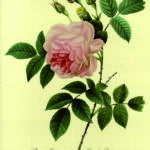 When he was only seventeen, Thomson discovered fossil mollusca on the Firth of Clyde. In 1839 he joined the East India Company as assistant surgeon and was involved in a siege in Afghanistan in 1842, narrowly avoiding being sold into slavery by bribing one of his captors. Thomson spent a number of years studying and collecting plants from across India and in 1855, together with Sir Joseph Hooker, he published Flora Indica.
When he was only seventeen, Thomson discovered fossil mollusca on the Firth of Clyde. In 1839 he joined the East India Company as assistant surgeon and was involved in a siege in Afghanistan in 1842, narrowly avoiding being sold into slavery by bribing one of his captors. Thomson spent a number of years studying and collecting plants from across India and in 1855, together with Sir Joseph Hooker, he published Flora Indica.
2. Thomas Drummond (1793-1835)
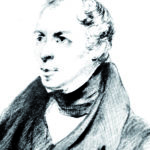 James Drummond’s younger brother is best known for his distributed set of mosses, Musci Scotici. He spent most of his plant-collecting time in North America, where he was assistant naturalist in Sir John Franklin’s second land expedition and afterwards explored the Rocky Mountains, New Orleans and Texas. Drummond had a torrid time abroad: he caught cholera twice, almost starved to death and suffered a badly ulcerated leg in Texas. He was only forty-two when he finally succumbed to illness in Havana in 1835.
James Drummond’s younger brother is best known for his distributed set of mosses, Musci Scotici. He spent most of his plant-collecting time in North America, where he was assistant naturalist in Sir John Franklin’s second land expedition and afterwards explored the Rocky Mountains, New Orleans and Texas. Drummond had a torrid time abroad: he caught cholera twice, almost starved to death and suffered a badly ulcerated leg in Texas. He was only forty-two when he finally succumbed to illness in Havana in 1835.
3. Archibald Menzies (1754-1842)
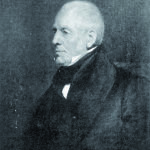 In 1790, Menzies, who was born in Weem, Perthshire, was appointed naturalist for the round-the-world voyage on HMS Discovery, and in 1794, along with two others, made the first recorded ascent to the summit of Mauna Loa in Hawaii. Whilst in Chile, Menzies was served Chile pine seeds whilst dining with the country’s governor. He managed to stow some away and returned with five healthy plants. His name is commemorated in the Douglas Fir or Pseudotsuga menziesii.
In 1790, Menzies, who was born in Weem, Perthshire, was appointed naturalist for the round-the-world voyage on HMS Discovery, and in 1794, along with two others, made the first recorded ascent to the summit of Mauna Loa in Hawaii. Whilst in Chile, Menzies was served Chile pine seeds whilst dining with the country’s governor. He managed to stow some away and returned with five healthy plants. His name is commemorated in the Douglas Fir or Pseudotsuga menziesii.
4. George Forrest (1873-1932)
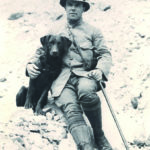 In 1902, Falkirk-born Forrest met a professor from the Royal Botanic Garden, Edinburgh which led to a subsequent job offer in the herbarium. In 1904 he took part in a plant-collecting expedition to Yunnan province in China where he was caught up in the 1905 Tibetan Rebellion with a Naxi ‘king’ rescuing him from certain death. Forrest made a total of seven trips to Yunnan, collecting around 31,000 plant specimens and discovering numerous species.
In 1902, Falkirk-born Forrest met a professor from the Royal Botanic Garden, Edinburgh which led to a subsequent job offer in the herbarium. In 1904 he took part in a plant-collecting expedition to Yunnan province in China where he was caught up in the 1905 Tibetan Rebellion with a Naxi ‘king’ rescuing him from certain death. Forrest made a total of seven trips to Yunnan, collecting around 31,000 plant specimens and discovering numerous species.
5. Sir Joseph Dalton Hooker (1817-1911)
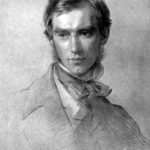 Hooker was brought up in Glasgow, where his father was Regius Professor of Botany at Glasgow University, and where he studied medicine. He is considered one of the greatest British botanists and explorers, having travelled to Antarctica, the Himalayas, India, Morocco and the United States in search of new species of plants. Hooker was also great friends with Charles Darwin who acknowledged Hooker’s experience in his theory of evolution. Hooker was also director of Kew Gardens for twenty years.
Hooker was brought up in Glasgow, where his father was Regius Professor of Botany at Glasgow University, and where he studied medicine. He is considered one of the greatest British botanists and explorers, having travelled to Antarctica, the Himalayas, India, Morocco and the United States in search of new species of plants. Hooker was also great friends with Charles Darwin who acknowledged Hooker’s experience in his theory of evolution. Hooker was also director of Kew Gardens for twenty years.
6. George Sherriff (1898-1967)
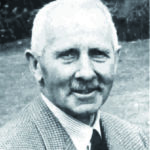 It was as Vice-Consul at Kashgar in India at the end of World War I that Sherriff met Englishman Frank Ludlow. Together they visited Tibet and the Himalayas and collected 2,000 specimens. Further trips to Bhutan and Tibet led to a further 5,000 species being amassed. Sherriff was also able to utilise air travel to transport delicate specimens. He returned to Scotland in 1950 and settled in Kirriemuir, where he created a remarkable Himalayan garden containing every known species of primula.
It was as Vice-Consul at Kashgar in India at the end of World War I that Sherriff met Englishman Frank Ludlow. Together they visited Tibet and the Himalayas and collected 2,000 specimens. Further trips to Bhutan and Tibet led to a further 5,000 species being amassed. Sherriff was also able to utilise air travel to transport delicate specimens. He returned to Scotland in 1950 and settled in Kirriemuir, where he created a remarkable Himalayan garden containing every known species of primula.
7. David Lyall (1817-1895)
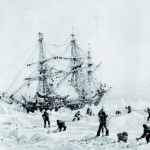 Lyall, who was born in Auchenblae, Kincardineshire, was assistant surgeon on HMS Terror, one of two ships forming Sir James Clark Ross’s famous Antarctic expedition. Working with Sir Joseph Hooker, who became his lifelong friend, Lyall botanised Kerguelen Island. Hooker named an entire genus, Lyallia, after him. He is best known for discovering the gigantic white-flowered buttercup, Rannunculus lyalli.
Lyall, who was born in Auchenblae, Kincardineshire, was assistant surgeon on HMS Terror, one of two ships forming Sir James Clark Ross’s famous Antarctic expedition. Working with Sir Joseph Hooker, who became his lifelong friend, Lyall botanised Kerguelen Island. Hooker named an entire genus, Lyallia, after him. He is best known for discovering the gigantic white-flowered buttercup, Rannunculus lyalli.
8. James Drummond (1786-1863)
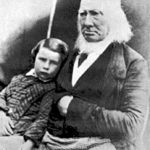 Drummond was born in Inverarity in Angus. At the age of 21 he was appointed curator of Cork Botanic Gardens where he discovered several plant species not known to occur in Ireland. In 1828, due to the economic recession, Drummond was forced to emigrate to Australia with his wife and six children where he invested in 5,000 acres of land at Swan River in Western Australia. He also went on expeditions to collect a number of species of seeds and living plants, both for collectors in Australia and for London’s Kew Gardens. Over a hundred plant species were named in his honour.
Drummond was born in Inverarity in Angus. At the age of 21 he was appointed curator of Cork Botanic Gardens where he discovered several plant species not known to occur in Ireland. In 1828, due to the economic recession, Drummond was forced to emigrate to Australia with his wife and six children where he invested in 5,000 acres of land at Swan River in Western Australia. He also went on expeditions to collect a number of species of seeds and living plants, both for collectors in Australia and for London’s Kew Gardens. Over a hundred plant species were named in his honour.
9. Francis Masson (1741-1805)
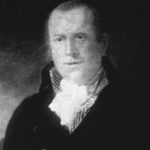 In 1772, whilst working as under-gardener at Kew Gardens, Aberdeen-born Masson sailed with James Cook to South Africa where he stayed for three years and sent back over 500 species of plant. In 1778, whilst on a trip to Madeira, the Azores and the Antilles, Masson was captured by the French, then in 1797 on his way to North America, the unlucky Masson’s ship was captured by French pirates. Masson died in Canada in 1805, aged only 66, having collected 24 new species in his seven years in North America.
In 1772, whilst working as under-gardener at Kew Gardens, Aberdeen-born Masson sailed with James Cook to South Africa where he stayed for three years and sent back over 500 species of plant. In 1778, whilst on a trip to Madeira, the Azores and the Antilles, Masson was captured by the French, then in 1797 on his way to North America, the unlucky Masson’s ship was captured by French pirates. Masson died in Canada in 1805, aged only 66, having collected 24 new species in his seven years in North America.
10. Robert Fortune (1812-1880)
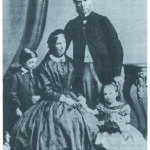 Fortune is best known for introducing tea to Britain – a daring and remarkable tale that involved him smuggling the plants out of China disguised as a Chinaman. He was sent there by the Royal Horticultural Society to collect plants and he is credited with introducing a number of new and exotic fruits, flowers and plants into Europe, including the kumquat and many varieties of peonies, azaleas and chrysanthemums.
Fortune is best known for introducing tea to Britain – a daring and remarkable tale that involved him smuggling the plants out of China disguised as a Chinaman. He was sent there by the Royal Horticultural Society to collect plants and he is credited with introducing a number of new and exotic fruits, flowers and plants into Europe, including the kumquat and many varieties of peonies, azaleas and chrysanthemums.
TAGS

